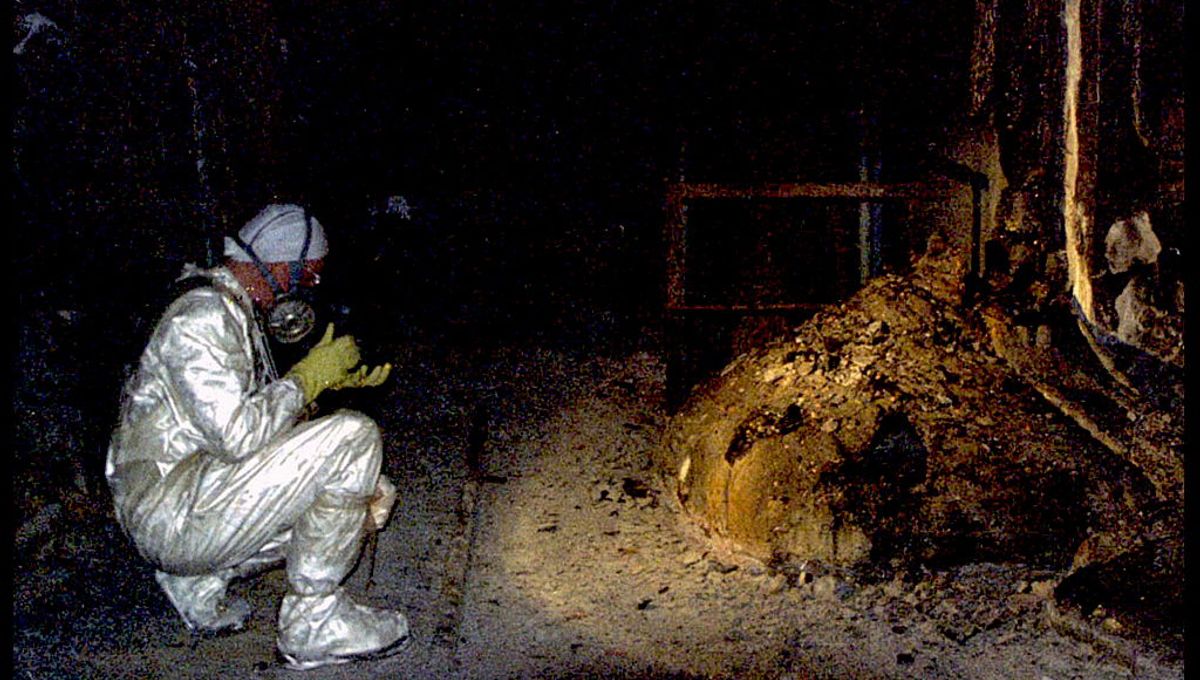
Had you lingered in the room with this hardened mass in the late 1980s, your chances of seeing another birthday would have been slim. Just seconds in its presence would leave you puking, feverish, and barely able to think. This is no ordinary industrial debris – it’s a relic from the heart of the Chernobyl nuclear disaster, humming with radiation at levels beyond comprehension.
ADVERTISEMENT GO AD FREE
Dubbed the Elephant’s Foot, this solidified mass of molten material lies in the basement beneath Reactor 4 of the Chernobyl Nuclear Power Plant, the site of the worst nuclear disaster in Europe.
The infamous incident unfolded in the small hours of April 26, 1986, at the V.I. Lenin Nuclear Power Plant near the Ukrainian city of Pripyat. Due to a flawed reactor design and operational blunders during a safety test, Reactor 4 overheated and violently exploded, spewing huge amounts of radioactive material into the surrounding environment.
As the term “meltdown” suggests, a nuclear incident like this kicks out an unimaginable amount of heat, enough to turn the reactor and its fuel rods into a lava-like slurry. Eventually, this molten cocktail of metal, sand, and uranium cools and hardens into formations known as fuel-containing materials (FCMs). The ruins of Chernobyl are littered with tons of this hazardous material, but none are as legendary – or as deadly – as the Elephant’s Foot.
Shortly after the disaster, it emitted around 10,000 roentgens of ionizing radiation per hour. That’s an incredible dose of dangerous radiation. For context, exposure to just 500 roentgens sustained over a period of 5 hours would be certain death. Even momentary exposure would be even to give you severe radiation sickness.
The Elephant’s Foot has since lost some of its potency due to the natural radioactive decay of uranium, so much so that scientists, clean-up crews, and photographers were able to visit the site years later.
The most famous image of the Elephant’s Foot was taken in 1996 by Artur Korneyev (sometimes translated as Korneev), a Kazakhstani nuclear expert who was tasked with the intimidating job of finding the rogue fuel in the bowels of Chernobyl and measuring the radiation levels.
ADVERTISEMENT GO AD FREE
“We were the trailblazers. We were always on the front edge,” a 65-year-old Korneyev said in 2014, speaking to The New York Times.
There are unconfirmed reports that Artur Korneyev passed away in 2022 at the age of 73. However, it is well-documented that his later years were impacted by health problems related to his radiation exposure at Chernobyl – his encounters with the Elephant’s Foot certainly didn’t help.
“Soviet radiation is the best radiation in the world,” he grimly joked.
Photographing the Elephant’s Foot is no small feat, but obtaining samples from the iconic FCM is even harder. At first, the mass of material was so dense that scientists had to use a Kalashnikov assault rifle to chip off pieces for analysis.
ADVERTISEMENT GO AD FREE
A few sources have attested to this claim, including Dr Boris Burakov, a scientist at VG Khlopin Radium Institute, who delivered a talk on the topic in 2013 at the International Experts’ Meeting on Decommissioning and Remediation after a Nuclear Accident in Vienna, Austria.
However, much like its declining radiation levels, the Elephant’s Foot has softened over time. These days, researchers no longer need a Kalashnikov to get their hands on samples.
“Now it more or less has the consistency of sand,” Maxim Saveliev from the Institute for Safety Problems of Nuclear Power Plants told Science in 2021.
Source Link: Chernobyl's "Elephant's Foot" Was So Tough, Kalashnikovs Were Used To Chip Off Samples